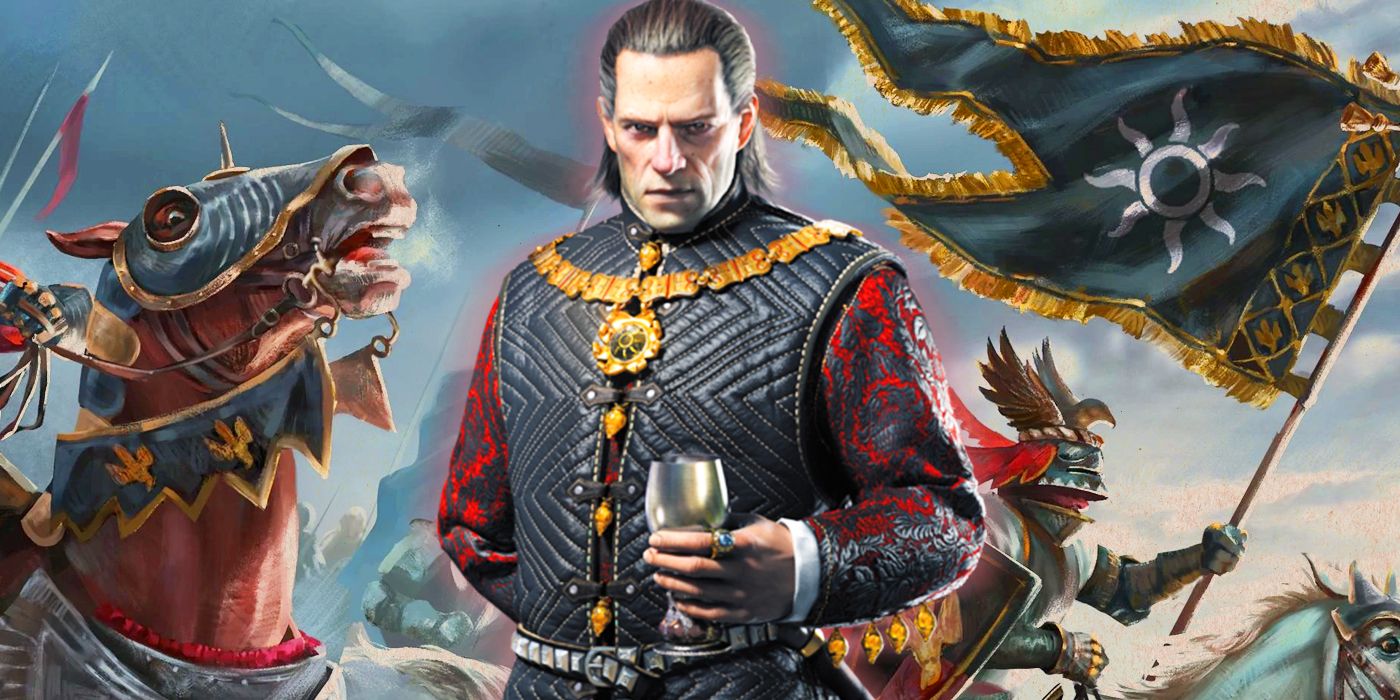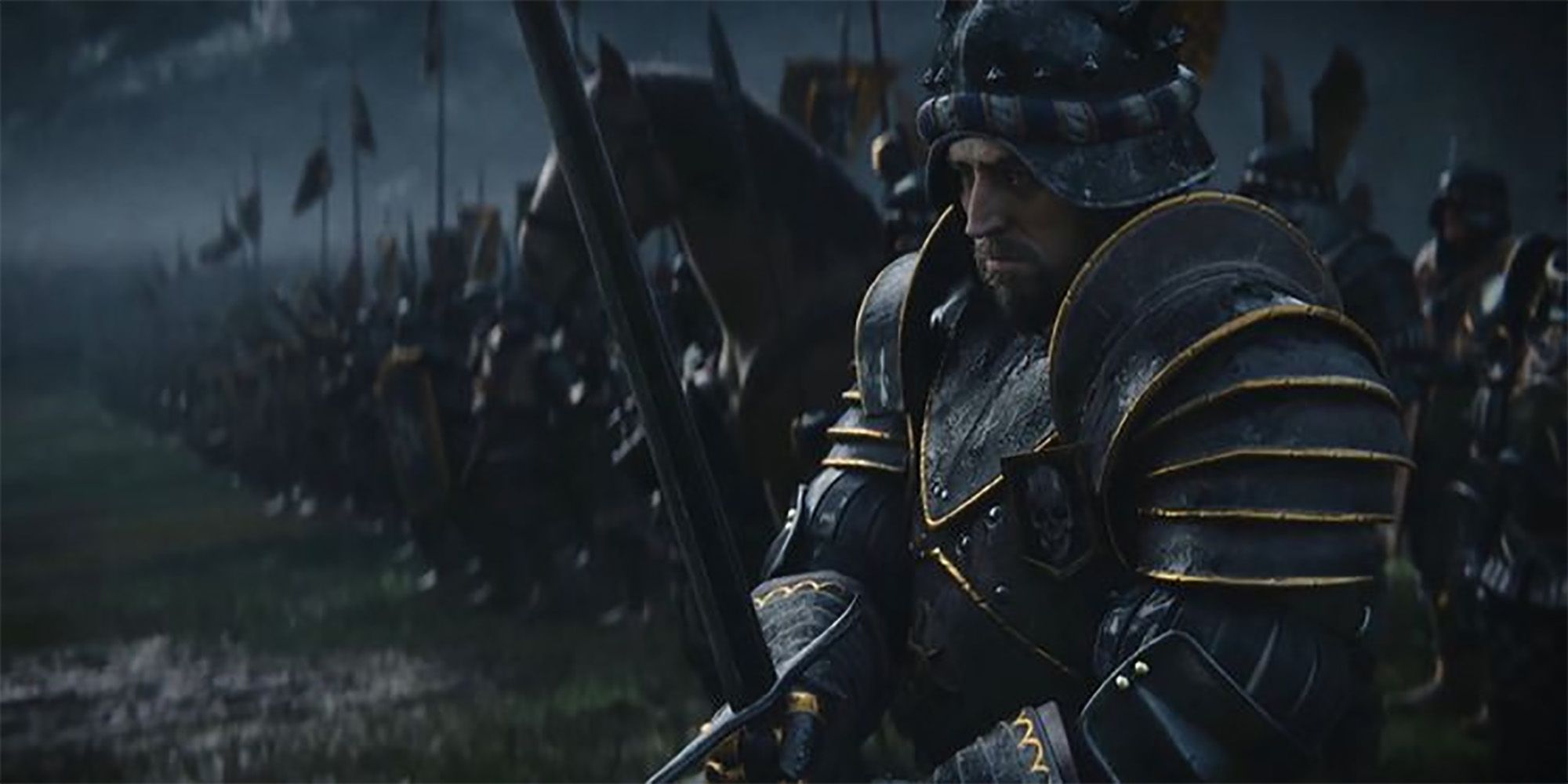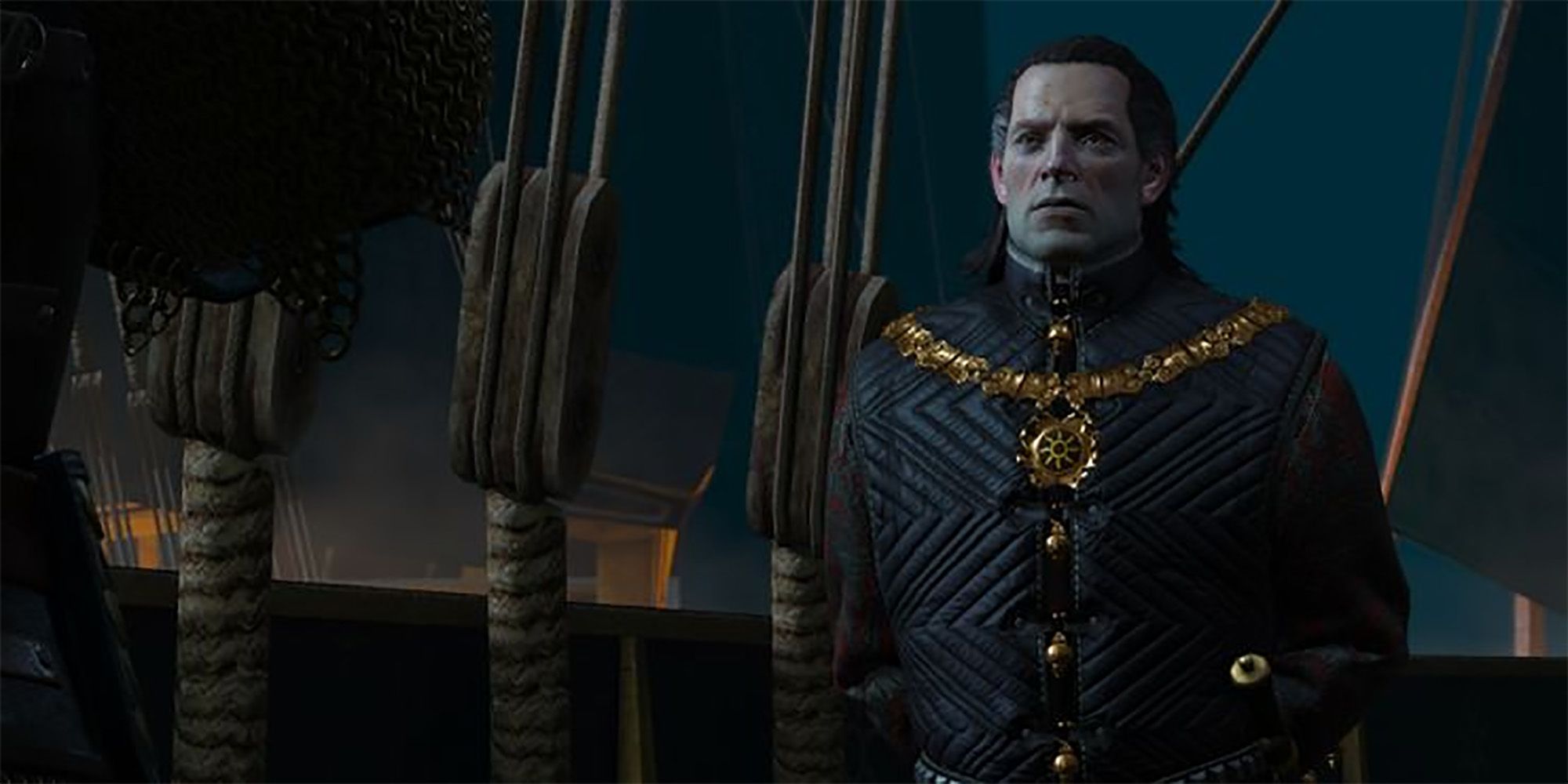The Empire of Nilfgaard is one of the most powerful antagonists in The Witcher's colorful history and lore. A shadow of doom crawling across the rest of The Continent from the southern reaches, Nilfgaard's power accumulated through its numerous conquests over the ages. Known to be the most powerful kingdom in the history of the known world, Nilfgaard can trace its roots back to the second century, when its first settlers arrived and began mixing with the "Black Siedhe" who already inhabited the region.
Nearly everyone in Nilfgaard can claim to have the blood of the elves in their lineage, and the early establishment of their alliance with the elves shaped the culture, language, beliefs and customs that define them as a whole. That early alliance proved favorable as their nation began to grow, the cultures lending one another their most powerful aspects until Nilfgaard itself was born.
As Nilfgaard began to expand through its numerous conquests of neighboring countries, those countries became provinces of the Empire. Though the kings of those countries maintained their thrones, they became vassals subject to the rule of the emperor. Before there were emperors in Nilfgaard, however, its monarchs worked hand in hand with an advisory council called the Senate. In the 12th Century, Imperator Torres var Emreis overthrew the Senate and claimed power, shifting the balance of government and naming Torres the first Nilfgaardian Emperor.
During Emperor Torres's time, the Great Sun's religion became the centralized practice in Nilfgaard, but it was not established officially until the reign of Emperor Fergus var Emreis. Emperor Fergus sought a unifying symbol to strengthen Nilfgaard, so he began pouring gold into the Cult of the Great Sun until they grew to become the centralized religion of Nilfgaard. Their golden sun symbol was named the official coat of arms for the Empire, but Fergus's reign did not last.
Related: The Witcher: How Geralt Met Dandelion
A man known as the Usurper staged a coup in 1223 to overthrow Emperor Fergus. During that time, Fergus was killed and his son, Emhyr, was cursed by the Usurper's sorcerer. Emhyr managed to escape, changing his name and heading north into hiding as he searched for a way to break the sorcerer's curse, which caused him to live by day as a hedgehog creature. During his reign, the Usurper dissolved the Cult of the Great Sun's rights, but in 1259 Emhyr returned to take back what was stolen from his father. In an uprising led by supporters of Emhyr var Emreis, including the sorcerer Vilgefortz, the Usurper was killed and Emhyr retook the throne. He paved his dance hall in the palace with his enemies' gravestones, earning himself the nickname the "White Flame Dancing on the Barrows of His Enemies."
In the time of Emperor Emhyr var Emreis explored during Andrzej Sapkowski's literary explorations of The Witcher and CD Projekt Red's games, the Nilfgaardian Empire expanded as far north as the Yaruga River, granting Emhyr's powerful military access to Cintra and Verden. The Usurper had expanded the Empire heartily during his rule, and Emhyr picked up where he left off, intent on building an even more powerful and prestigious Nilfgaard.
Emhyr's first attempt to do this launched with an attack against the kingdom of Cintra in 1263 and became known as the First Northern War. Emhyr's men launched a full-scale attack on Cintra, sacking the kingdom's capital city and resulting in the suicide of its queen, Calanthe. After claiming Cintra, the Nilfgaardian army moved north into Upper Sodden to claim victory; their attempts to take Lower Sodden were met by the combined military might of Temeria, Redania, Aedirn and Kaedwen. Nilfgaard lost the battle. Forced to retreat, Emperor Emhyr held tight to Cintra while plotting his next attempt to seize the north.
In 1267, Emhyr launched into the Second Northern War with the Thanedd Coup, an effort to nullify the Northern mages' power, which had granted the north their victory in the first war. With many mages out of the picture, the emperor was able to capture the north. To maintain it, he needed Cintra's heir, Cirilla, to quell the people and their numerous uprisings. While searching for Ciri, he used a stand-in for the girl, but one of the men entrusted to find her sought to overthrow the emperor and plotted to kill the real Ciri to prevent Emhyr from producing an heir that would strengthen his hold. When Emhyr eventually found Ciri, who was actually his daughter, he saw that she only cared for her adoptive parents. As he had actually started to fall for the false Ciri, who'd been recognized as Cintra's heir, he married her and brought Cintra into the Empire.
In CD Projekt Red's further explorations of the story, the Third Northern War launched at the end of The Witcher 2: Assassins of Kings, in 1271 after the failed summit at Loc Muinne. It dominated much of the storyline in The Witcher 3: Wild Hunt, and whether or not Nilfgaard managed to finally overtake the Northern Kingdoms, as it had fought so hard to do during Emperor Emhyr's entire reign, was entirely dependent upon the player's choices.
People in the Northern Kingdoms loathed Nilfgaard as much as they feared them, as the Empire's constant campaign northward to expand their territory threatened their way of life. Never mind that Nilfgaard's power might have brought prosperity and stability to many of the struggling lower-class people of the Northern Kingdoms and potentially provided some of the freedom and unity the suffering non-humans desperately sought to establish. Nilfgaard sought to change everyone's way of life in an effort to force their own upon them, and their numerous successful attempts to do so deeply scarred the rest of The Continent throughout the ages.



